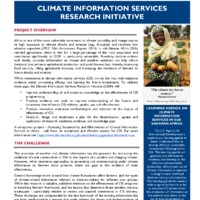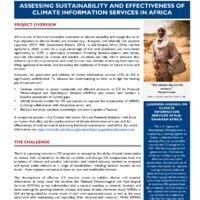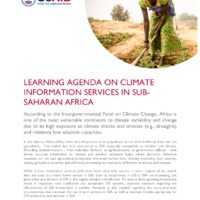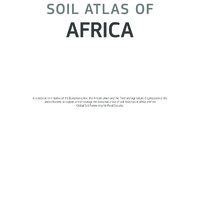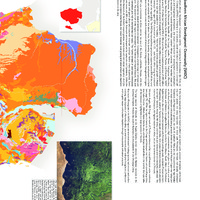Recherche
6 items
Learning agenda on cis - mercy corps two pager final
While investments in climate information services (CIS) are on the rise, little objective evidence exists concerning efficacy and learning for future investments. To address these gaps, the Climate Information Services Research Initiative (CISRI) will: • Improve understanding of, and access to, knowledge on the effectiveness of CIS programming. • Produce evidence and tools to improve understanding of the factors and structures that influence CIS delivery, uptake, use and effectiveness. • Produce innovative evaluation methodologies and evidence on the degree of effectiveness of CIS. • Research, design and implement a plan for the dissemination, uptake and application of research, synthesis, evidence, and knowledge gaps.
Learning agenda on cis - winrock two pager final
Africa is one of the most vulnerable continents to climate variability and change due to its high exposure to climate shocks and stresses (e.g., droughts) and relatively low adaptive capacities (IPCC Fifth Assessment Report, 2014). In sub-Saharan Africa (SSA) rain-fed agriculture, which is vital for a large percentage of the rural population and contributes significantly to GDP, is particularly vulnerable. Providing decision-makers with timely, accurate information on climate and weather variations can help inform decisions that enhance agricultural production and avoid harvest loss, thereby improving food security, lifting agricultural incomes, and increasing the resilience of farmers to future shocks and stresses. However, the generation and delivery of climate information services (CIS) in SSA is significantly underfunded. To advance our understanding on how to bridge the funding gap this project will: • Develop metrics to assess sustainable and effective provision of CIS by National Meteorological and Hydrological Services (NMHSs) and others, and conduct a baseline assessment of current gaps; • Identify business models for CIS and options to improve the sustainability of NMHSs including collaboration with the private sector; and • Build partnerships, synthesis knowledge, and ensure uptake of lessons.
Learning agenda on climate services overview factsheet final
In sub-Saharan Africa (SSA), more than 65 percent of the population derive their livelihood from rain-fed agriculture. This makes the rural economies in SSA especially susceptible to weather and climate. Providing decision-makers - from individual farmers, to agribusinesses, to government officials - with timely, accurate information on climate and weather variations helps inform decisions. Informed decisions can increase agricultural production and avoid harvest loss, thereby improving food security, raising agricultural incomes, and ultimately increasing the resilience of farmers to shocks and stresses. While climate information services (CIS) have been used with success in other regions of the world, they are used to a much lower extent in SSA. Even as investments in CIS in SSA are increasing, the generation and delivery of CIS in the region remains underfunded. To ensure these growing investmests result in improved rural livelihoods and sustainable CIS systems, objective evidence regarding the effectiveness of CIS investments is needed. Research is also needed regarding the socio-economic circumstances that constrain the use of such services in SSA, as well as business models appropriate for CIS production and delivery in SSA.
Soil atlas of africa part 1
Arwyn Jones, European Commission Joint Research Centre, Italy (Chair); Henrik Breuning-Madsen, University of Copenhagen, Denmark; Michel Brossard, Institut de recherche pour le développement, Montpellier, France; Almami Dampha, African Union Commission, Ethiopia; Jozef Deckers, KU Leuven, Belgium; Olivier Dewitte, European Commission Joint Research Centre, Italy; Tahar Gallali, Faculté des Sciences de Tunis, Tunisia; Stephen Hallett, World Soil Survey Archive and Catalogue, Cranfield University, UK; Robert Jones, World Soil Survey Archive and Catalogue, Cranfield University, UK; Method Kilasara, Sokoine University of Agriculture, Tanzania; Pieter Le Roux, University of the Free State, South Africa; Erika Micheli, Szent Istvan University, Hungary / IUSS WRB WG; Luca Montanarella, European Commission Joint Research Centre, Italy; Otto Spaargaren, ISRIC- World Soil Information, The Netherlands; Lamourdia Thiombiano, FAO Regional Office for Africa, Ghana; Eric Van Ranst, Ghent University, Belgium; Martin Yemefack, IRAD, Cameroon; Robert Zougmoré, International Crops Research Institute for the Semi-Arid Tropics (ICRISAT), Mali.
Soil atlas of africa part 2
Arwyn Jones, European Commission Joint Research Centre, Italy (Chair); Henrik Breuning-Madsen, University of Copenhagen, Denmark; Michel Brossard, Institut de recherche pour le développement, Montpellier, France; Almami Dampha, African Union Commission, Ethiopia; Jozef Deckers, KU Leuven, Belgium; Olivier Dewitte, European Commission Joint Research Centre, Italy; Tahar Gallali, Faculté des Sciences de Tunis, Tunisia; Stephen Hallett, World Soil Survey Archive and Catalogue, Cranfield University, UK; Robert Jones, World Soil Survey Archive and Catalogue, Cranfield University, UK; Method Kilasara, Sokoine University of Agriculture, Tanzania; Pieter Le Roux, University of the Free State, South Africa; Erika Micheli, Szent Istvan University, Hungary / IUSS WRB WG; Luca Montanarella, European Commission Joint Research Centre, Italy; Otto Spaargaren, ISRIC- World Soil Information, The Netherlands; Lamourdia Thiombiano, FAO Regional Office for Africa, Ghana; Eric Van Ranst, Ghent University, Belgium; Martin Yemefack, IRAD, Cameroon; Robert Zougmoré, International Crops Research Institute for the Semi-Arid Tropics (ICRISAT), Mali.
Soil atlas of africa part 3
Arwyn Jones, European Commission Joint Research Centre, Italy (Chair); Henrik Breuning-Madsen, University of Copenhagen, Denmark; Michel Brossard, Institut de recherche pour le développement, Montpellier, France; Almami Dampha, African Union Commission, Ethiopia; Jozef Deckers, KU Leuven, Belgium; Olivier Dewitte, European Commission Joint Research Centre, Italy; Tahar Gallali, Faculté des Sciences de Tunis, Tunisia; Stephen Hallett, World Soil Survey Archive and Catalogue, Cranfield University, UK; Robert Jones, World Soil Survey Archive and Catalogue, Cranfield University, UK; Method Kilasara, Sokoine University of Agriculture, Tanzania; Pieter Le Roux, University of the Free State, South Africa; Erika Micheli, Szent Istvan University, Hungary / IUSS WRB WG; Luca Montanarella, European Commission Joint Research Centre, Italy; Otto Spaargaren, ISRIC- World Soil Information, The Netherlands; Lamourdia Thiombiano, FAO Regional Office for Africa, Ghana; Eric Van Ranst, Ghent University, Belgium; Martin Yemefack, IRAD, Cameroon; Robert Zougmoré, International Crops Research Institute for the Semi-Arid Tropics (ICRISAT), Mali.
